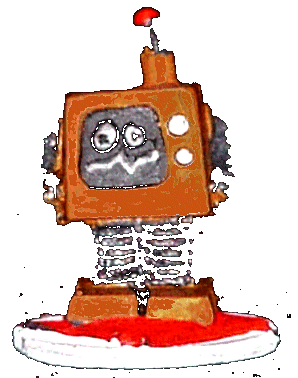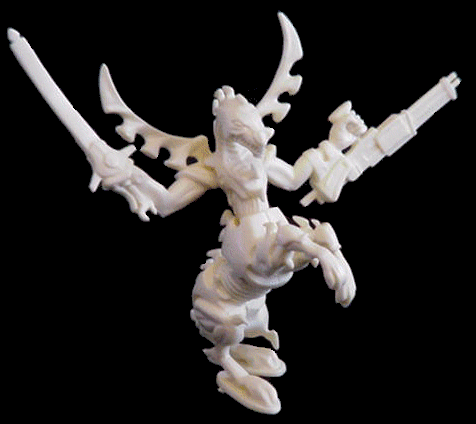
|
|
| 2-4 Players | 120+ minutes |
|
Concept: Send agents back into time to eliminate your enemies. |
|
|
Gameplay: Each player is given their own "time line" play card. They are also given 12 agents and 22 dueling tokens of the color of their choice. All agents are placed in the "Today" section of the player's time line card. Fate and Problem cards are placed in the middle of the table for easy access. Turns are played in phases -- during each phase players may announce their intended move in any order; There is no set player turn order. Turn phases proceed in this order:
Agents have two states: alert and busy. Alert agents have not yet made an action and typically have benefits when being attacked by other agents or time waves. Once an Agent performs an action in the Action Phase, it's token is flipped to busy. Most of the game takes place in the Action Phase. During this phase a player may instruct an agent to do any of the following tasks: Move 1 time zone lower; Invade from one time line card to another; Attack another agent; Aid/sabotage an Agent attack; Attack a Time Wave; Create a Time Wave; or "Snap" -- that is, return to your own Today. The most important actions are Creating Time waves and Attacking Agents. When an Agent Creates a time wave, they are attempting to create or solve a problem for the time line that they are in. When a Time Wave reaches the Today zone on a time line, the owner of that time line is gaining or reducing problems. Problems change the rules as to how the agents can operate. Once a player gets too many problems of certain categories, their game is over. Thus, creating a time wave is the most important activity in the game. Time wave creation can only be averted by attacking the agent before the wave is created: that is, interrupting them and making them busy so that they cannot create the wave. When Agents battle, only two agents may be involved in the actual attack -- the attacker and the defender. Other agents may aid or sabotage the attack, but they aren't the focus of the attack. Most of the time, only the main two combatants matter. To fight, each player chooses a time control token -- with a number form 1 to 21. These tokens are revealed simultaneously. The highest number wins the battle. The battle result is then determined by revealing a fate card. If the Attacker won the battle, then the top of the fate card is used; The bottom of the fate card is used for battles where the defender wins. After the battle, the tokens are discarded from the game. If a player doesn't want to use a number token they may use a fate card instead -- fate cards have numbers from -15 to +15. A different fate card is drawn to determine the battle results. Used fate cards are returned to the bottom of the fate card deck. Many battle results force the loser to be marked busy. Many also cause one opponent or both to be moved down into a lower time zone. If an agent is required to be moved below the pre-history zone, the agent is discarded form the game. A typical action round has many agents attempting to create time waves and opponents interrupt to attack them. Interrupting attacks is central to the game play. After all actions have been resolved for a turn, any time waves that were created get to move. Time waves move up the time lines. When a time wave hits Today, it is resolved first. Time waves consist of tokens that say "create" or "solve." When resolving in the today zone, a player must draw a new problem card for every two create tokens. They may discard a problem card for every two solve tokens. If there are any single solve tokens left over, they are flipped to be create tokens and then resolved again. when only one create token remains, it also adds a new problem to the player. Any time waves that have moved into a time zone other than today attack any agents that are in those zones. Players use a number token or a fate card for each of the agents -- then the time wave draws a fate card on its own -- Time waves get a +3 bonus to the fate card value for each create/solve token in it's stack. Any agents that lose the time wave attack are discarded. All number tokens used are returned to the players after a time wave attack. After the attack ends, the time wave is given an additional create token, and the overall turn ends. There are four types of problems in the game: generic (blank); Cultural (C); Societal (S); and Technological (T). Problem cards may have any or all of these four types. Most problems change rules for how the player is allowed to play -- for instance, one problem requires a player to only use fate cards when dueling. Problems change the rules for an individual player, and rarely for the better. If a player has received three problems of each C, S, and T problem types then they are eliminated from the game. Some problems have multiple types... they count as all of the types listed at the same time! It is possible that a player loses many Agents in battle (especially against a time wave) -- In order to get some agents back they may "cash out." A player may exchange 20 points of number tokens for a return of an agent; or they may create a problem for themselves to return an agent to play. The rules are 19 pages long...the above was as brief as I could explain the game without throwing the rule book at you. To see some example of the game in action look at the flash demo on the Thompson Industries web site. |
|
|
Winning Conditions:
|
|
|
Our Opinion:
The game mechanics seem sound when you read the rule book. Unfortunately, it took us five attempts at reading the rules to honestly understand the game enough to start playing. Because there is no set player order in the game, the opening turns are overflowing with potential activity. There is so much potential activity that is caused all of our reviewers to stall before actually playing. One of the most important items that the rules don't spell out obviously enough is that agents need to invade from time line to time line. Until we understood that each card was a time line on its own the game didn't make sense. After the first time of reading the rules, I thought I knew how to play...actually, I understood how to play the mid-game, but I had no clue how to start. The rules lack examples of how a turn would play out, probably because the turns are too complex to write down. All of the rules really want to encourage players to constantly interrupt each other's activities. Dueling is very important to the rules. After playing for a few hours, we found that interrupting was not very effective. We found that if you allowed a player to create a time wave, then you could attack the wave while their agents were busy -- thus killing the time wave before it could advance. Admittedly, interrupting the attack on the time wave could be useful, but why not just create another if the first was obliterated? Believe me after an hour of interrupting each others moves, you start to find alternate solutions that don't remove the number token resources that you need to get agents back after a time wave kills them all. It is very likely that all of the agents in the game are simultaneously killed by a time wave. It happened to us. The sudden collapse of our agent corps gave all of us the sinking fatalistic feeling that no matter what we tried we were doomed. When I first read the rules, I thought that the goal of the game was described poorly as "the last player left is the winner." I thought, incorrectly, that the writer needed to give some motivation in this goal statement. After playing through a game, I now see that the goal is correct... if you play you will inevitably be on the road to losing -- your goal is to be the last to lose. The opening few turns of this game are the longest. There are simply too many agents. Once a time wave starts up, the game changes quickly. In our game, I was able to position a lone agent in the pre-history zone of my opponent, and after the time waves killed all of the other agents, this agent simply created a new wave every turn. It was like fueling a fire...more and more time wave tokens were adding up. Of course, my opponent had similarly attacked me, so we met in a war of attrition, but I was lucky enough to have lost fewer agents overall and was able to hunt down his last few agents over and over. In two and a half hours, it was clear that eventually I would win, because my opponent was running out of ways to reclaim agents. The game was exhausting. All players and observers had a sense of futility in the game, with a touch of slap-happiness. We were tired form the effort, but the game never seemed to improve. Turns were faster because there were fewer agents, but the game was more tedious than amusing. I can only recommend this game to gamers who must have a complex game. A casual player will not appreciate this -- it's too complex, you can't remember all of the nuances unless you've played before. You have to be a fan of long strategy games and physics to appreciate this game. It may go over well at an engineering school, but probably won't anywhere else. |
|
|
Where to buy: Check here for ordering information. It costs about $25. |
|
 Other Reviews Other Reviews
|
Zombie Main page
|